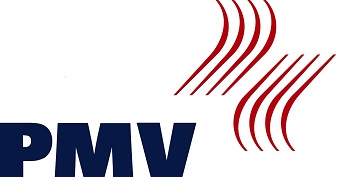Other projects for which extensive test setups or measuring equipment have been installed and which have always been part of one or more promotional projects are also included:
- Automatic test lanes for the evaluation of paper machine longitudinal and lateral
- Cross profiles according to surface mass, thickness, colour and gloss, including an office large calculator for data analysis (Fig. 8)
- Paper drying equipment for determining the specific characteristics of paper drying
- Development and construction of novel calender concepts for the optimization of the calendering process
- Construction of a plant for the production of corrugated board strips to improve the runnability of corrugated board papers and the bonding of corrugated board
- Introduction of image analysis systems and development of software programs for the analysis of paper structures (screen and felt marking, formation, pinholes) and printability (missing dots, mottling).
During his tenure in office, Prof. Göttsching has fostered a significant development in this field by dealing with the subject of waste paper. The increasing importance as a raw material for paper production was foreseeable at the time of his assumption of office, but certainly not the increase with which waste paper recycling increased over the next three decades. The stock preparation pilot plant was expanded by a pressure screen and fractionator for stock cleaning and fibre fractionation as well as the installation of a self-built flotation cell. In connection with various pulpers, flotation and washing cells as well as bleaching facilities on a laboratory scale, numerous diploma theses and several doctorates in the field of waste paper preparation could be carried out. Third-party funded research projects in the field of waste paper were initially carried out alone, later increasingly in national (e.g. BMFT project to increase waste paper recycling or BMBF project ÖKOPAP 2000) and international (e.g. EU projects DIP Bleaching and Enzymatic Deinking) integrated systems. In addition, studies and forecasts were prepared for the Association of German Paper Mills or the EU Commission on the development of the use of waste paper or on the still available waste paper potential. Prof. Göttsching took up the challenge of international competition and international cooperation in this field and earned himself the reputation of the “Recovered Paper Pope from Darmstadt”.
Prof. Göttsching's cosmopolitan nature was the basis for maintaining contacts with many colleagues at an international level – provided that there is a paper institute or at least a paper industry there. It was he who, after the Second World War, established intensive relations with Eastern Europe, which in any case maintained good contacts with Finland and established new ones with South, Central and North America, South Africa, Japan and Australia. He was not always able to cope with his busy travel activities on his own, so that his esteemed colleagues were often allowed to travel overseas on behalf of the Institute, which the author of these lines also enjoyed. Also unforgettable are the countless excursions with students and staff, which Prof. Göttsching conducted regularly once a year in Germany or Europe. In principle, excursions are a further training measure for each participant and broaden the horizon, whereby for students and employees the excursions to Finland have always been of particular interest. The highlights of all excursions, at least for those who were allowed to take part, were certainly two overseas trips. In 1984, a group of 16 employees and selected students travelled to Kenya and South Africa to visit the pulp and paper industry and the sister institute in Stellenbosch. Two years later, five institute staff travelled to China to visit paper mills and hold seminars in various papermaking centres. Both the technical and cultural impressions made both trips an unforgettable experience.





